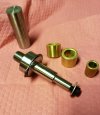Updates.
Made the banjo hub/bearing retainer plate and got that mounted.
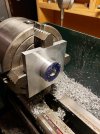
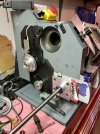

Finished grooving the keyed shaft for the cluster gear and got that installed.
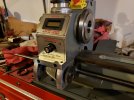
Sealed up the headstock by epoxying a short section of 2" conduit inside so the oil-bath bearings don't lose all their oil past the holes on inboard sides of the bearings.
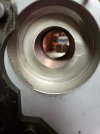
Sourced some old automatic transmission parts for material to make seal housings for the headstock bearings.
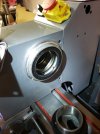
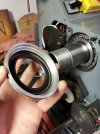
Then I pressed in new tapered-roller bearings and installed the spindle.
After that I parted the gear spacer in half, polished it for a seal journal, and installed it. I left just enough sticking out past the seal to clear the drive gear while keeping the drive gear as close to the headstock as possible.
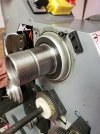
Next part of the stack is the drive gear for the leadscrew which had to be repositioned to line up with the future tumbler gears and clear the stud gear. I bored the center out of a 60-tooth gear, cut a key slot, and installed it. Next went the other half of the spacer (which I'll need to drill for the four speed sensor magnets), the pulley, and spindle nuts.
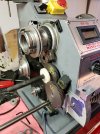
I mocked up the geartrain here. The 60 tooth spindle gear drives either the 25 tooth or 35 tooth rocker gears (for forward or reverse leadscrew direction), the 35-tooth gear drives the 60-tooth gear on the stud shaft which is coupled to the changeable stud gear (here a white plastic 40-tooth), the stud (A) gear drives the compound B gear which is coupled to the compound C gear, the C gear drives the changeable D gear which is keyed to the quick change gearbox input shaft. The compound gears will be mounted on the banjo. Still have to make the rocker assembly and lever, banjo, and some other small parts but this is the general idea of how it will work.









